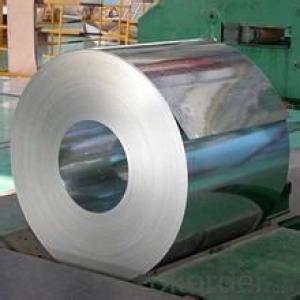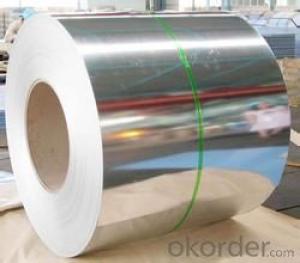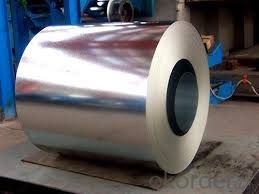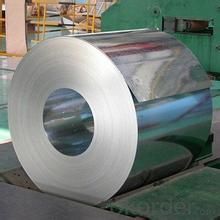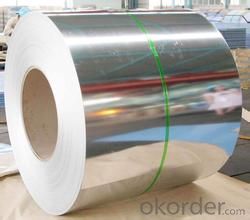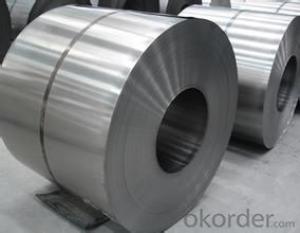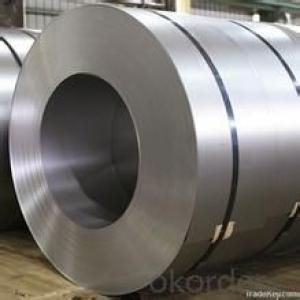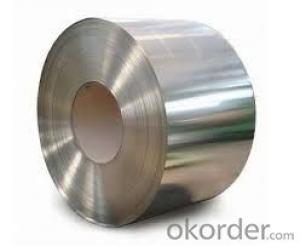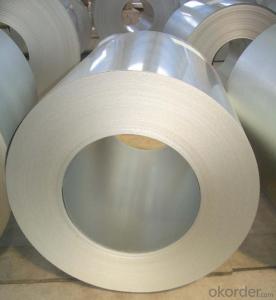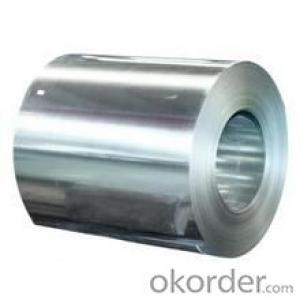EXCELLENT HOT-DIP ALUZINC STEEL in China In CNBM
- Loading Port:
- Tianjin
- Payment Terms:
- TT OR LC
- Min Order Qty:
- 30 m.t.
- Supply Capability:
- 5000000 m.t./month
OKorder Service Pledge
OKorder Financial Service
You Might Also Like
Specification of hot-dip aluzinc steel:
THICKNESS:0.18mm-1.5mm
WIDTH:900mm-1250mm
COATING MASS:AZ30-AZ150
SPANGLE:Minimized Spangle,Zero Spangle
SURFACE TREATMENT:N0on or Chromated,Non or Oiled,Non or Anti Finger Print
COIL INNER DIAMETER:508mm/610mm
COIL WEIGHT:3mt-7m
Applications of hot-dip aluzinc steel:
1. roofing
2. gutters
3. unexposed automotive parts
4. appliances
5. furniture
6. outdoor cabinetry
Images of hot-dip aluzinc steel

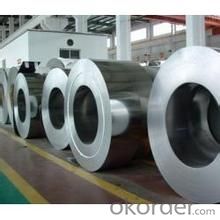
Hot-dip galvanized steel coils are available with a pure zinc coating through the hot-dip galvanizing process. It offers the economy, strength and formability of steel combined with the corrosion resistance of zinc. The hot-dip process is the process by which steel gets coated in layers of zinc to protect against rust. It is especially useful for countless outdoor and industrial applications.
We can ensure that stable quality standards are maintained, strictly meeting both market requirements and customers’ expectations. Our products enjoy an excellent reputation and have been exported to Europe, South-America, the Middle-East, Southeast-Asia, Africa and Russia etc.. We sincerely hope to establish good and long-term business relationship with your esteemed company.
- Q: What is the width range of steel coils?
- The width range of steel coils can vary depending on the specific requirements and industry standards, but generally, it can range from a few millimeters to several meters.
- Q: Are steel coils affected by magnetic fields?
- Yes, steel coils can be affected by magnetic fields. Steel is a ferromagnetic material, which means it can be magnetized or attracted to magnets. When a magnetic field is applied to a steel coil, it can induce a magnetic field within the coil, causing the coil to become magnetized. This can have several effects depending on the strength and duration of the magnetic field. If the magnetic field is strong and the coil is exposed to it for a significant amount of time, it can cause the steel coil to retain some magnetism even after the magnetic field is removed. This can be problematic in certain applications where a non-magnetic material is required, as the magnetized steel coil may attract or interfere with other nearby objects. On the other hand, if the magnetic field is rapidly changing or fluctuating, it can induce electrical currents within the steel coil through electromagnetic induction. These induced currents, known as eddy currents, can generate heat within the coil, leading to energy losses and potential damage to the coil. Therefore, it is important to consider the effects of magnetic fields on steel coils in various applications. Protective measures such as shielding or demagnetizing processes may be necessary to minimize the impact of magnetic fields on steel coils when required.
- Q: How are steel coils used in the production of packaging machinery?
- Steel coils are used in the production of packaging machinery as they serve as the raw material for manufacturing various components of the machinery, such as frames, supports, and structural elements. The steel coils are processed through cutting, bending, and welding to create the necessary parts, ensuring durability and stability in the packaging machinery's construction.
- Q: What are the different methods of uncoiling steel coils?
- There are several different methods of uncoiling steel coils, depending on the specific requirements and equipment available. Some common methods include: 1. Uncoiling by hand: This method involves manually unwinding the coil by hand using a bar or rod inserted through the inner diameter of the coil. It is typically used for smaller coils or when other methods are not available. 2. Uncoiling with a mandrel: A mandrel is a cylindrical tool that supports the inner diameter of the coil and allows it to rotate freely. The coil is placed on the mandrel, which is then rotated to unwind the steel. 3. Uncoiling with a decoiler machine: Decoiler machines are designed specifically for uncoiling steel coils. They typically consist of a mandrel or drum that holds the coil, along with a motorized mechanism that rotates the coil and controls the speed of unwinding. Decoilers can handle larger and heavier coils, making them suitable for industrial applications. 4. Uncoiling with a straightener-feeder: This method is often used when the steel coil needs to be straightened and fed into a production line simultaneously. The coil is passed through a set of straightening rollers to remove any curvature, and then fed into the subsequent processing equipment. 5. Uncoiling with a recoiler: Recoilers are used when the steel coil needs to be rewound into a new coil. The original coil is uncoiled using one of the aforementioned methods, and then the steel is rewound onto a new mandrel or drum to create a smaller coil. It is important to note that the choice of uncoiling method depends on various factors such as the size and weight of the coil, the desired level of automation, and the specific production requirements.
- Q: What are the dimensions of steel coils used in the electrical equipment industry?
- The dimensions of steel coils used in the electrical equipment industry can vary depending on the specific application and requirements. However, common dimensions for steel coils used in this industry range from 0.25mm to 3mm in thickness and 600mm to 2000mm in width. The inner diameter of the coil is typically around 508mm, while the outer diameter can vary from 800mm to 2000mm. These dimensions ensure compatibility with various electrical equipment manufacturing processes and enable efficient production.
- Q: What are the different methods of coil leveling?
- Various industries commonly utilize several methods for coil leveling. These methods encompass: 1. Roller leveling: By passing the coil through a sequence of rollers, pressure is applied gradually, resulting in the gradual flattening of the coil. The rollers can be adjusted to exert varying levels of pressure, allowing for precise control over the leveling process. 2. Stretch leveling: This technique subjects the coil to tension forces, elongating the material and eliminating internal stresses. As the coil is stretched while passing through rollers, a more uniform and flat surface is achieved. 3. Temper leveling: Involving the heating of the coil to a specific temperature followed by rapid cooling, this method helps equalize stresses within the coil and enhance its flatness. Temper leveling is often employed for high-strength steels. 4. Roller leveling with leveling rolls: This approach utilizes additional leveling rolls placed above and below the main leveling rollers. These rolls apply pressure to specific areas of the coil, rectifying any unevenness or distortions. 5. Tension leveling: This method involves applying tension to the coil during processing. The tension aids in straightening and flattening the material, resulting in a more even and flat surface. 6. Precision leveling: Employed for high-precision applications necessitating extremely flat and uniform coils, precision leveling combines roller leveling, stretch leveling, and other corrective measures to attain the desired flatness. Each of these methods possesses unique advantages and limitations. The selection of a particular method depends on factors such as the type of material being leveled, the required flatness tolerance, and the intended application of the coil.
- Q: What are the different coil packaging options available for steel coils?
- Customers have a range of coil packaging options to choose from for steel coils, depending on their specific requirements and preferences. Some commonly used packaging options include the following: 1. Traditional steel strapping is used to secure the coil, ensuring excellent stability and protection during transportation and storage. 2. Plastic strapping is a lighter and more cost-effective alternative to steel strapping, suitable for smaller and lighter steel coils while still providing sufficient strength and protection. 3. Shrink wrapping involves using heat to tightly seal a plastic film around the steel coil, offering protection against moisture, dust, and other contaminants. 4. Wooden crates provide additional protection against physical damage during handling and transportation. They can be customized to fit the coil's dimensions and secured with straps or nails. 5. Coil covers are heavy-duty plastic or fabric covers that shield the steel coil from environmental factors like UV exposure, moisture, and dust. They are often used in combination with other packaging methods. 6. Paper or fiberboard wrapping offers a lightweight and cost-effective solution for protecting the coil against minor scratches and abrasions. 7. Customized packaging allows for a combination of the above options or tailor-made solutions based on specific requirements. This may involve additional padding, corner protectors, or special handling instructions to ensure safe transportation and storage. Customers should consider factors such as coil size, weight, transportation mode, storage conditions, and budget to choose the most suitable coil packaging option for their needs.
- Q: How are steel coils coated to prevent corrosion?
- Steel coils are coated to prevent corrosion through a process known as galvanization. This involves applying a protective layer of zinc onto the surface of the steel coils. The zinc acts as a barrier, preventing the steel from coming into contact with moisture and oxygen, which are the main causes of corrosion. This coating not only provides excellent corrosion resistance but also enhances the durability and longevity of the steel coils.
- Q: So...that means Wolverine can stab him, right? Because Adamantite is stronger than steel. Correct?
- Faster than a Speeding bullet too!! They are just expressions/nicknames. Obviously he's faster than a speeding bullet, he can run from Kansas to Mexico and back and you wouldn't even know it. If you want it literally, just call him Superman, or extremely tough and fast man.
- Q: I need to construct a table with three columns, which states the name of the steel, its compositions (e.g. Fe and C), and its special properties for a variety of different steel products.Help me please, a site with info would be great, explanations would be even better.
- Steel is an alloy consisting mostly of iron, with a carbon content between 0.2% and 2.1% by weight, depending on the grade. Carbon is the most common alloying material for iron, but various other alloying elements are used, such as manganese, chromium, vanadium, and tungsten.[1] Carbon and other elements act as a hardening agent, preventing dislocations in the iron atom crystal lattice from sliding past one another. Varying the amount of alloying elements and form of their presence in the steel (solute elements, precipitated phase) controls qualities such as the hardness, ductility, and tensile strength of the resulting steel. Steel with increased carbon content can be made harder and stronger than iron, but is also less ductile. H.
Send your message to us
EXCELLENT HOT-DIP ALUZINC STEEL in China In CNBM
- Loading Port:
- Tianjin
- Payment Terms:
- TT OR LC
- Min Order Qty:
- 30 m.t.
- Supply Capability:
- 5000000 m.t./month
OKorder Service Pledge
OKorder Financial Service
Similar products
Hot products
Hot Searches
Related keywords

